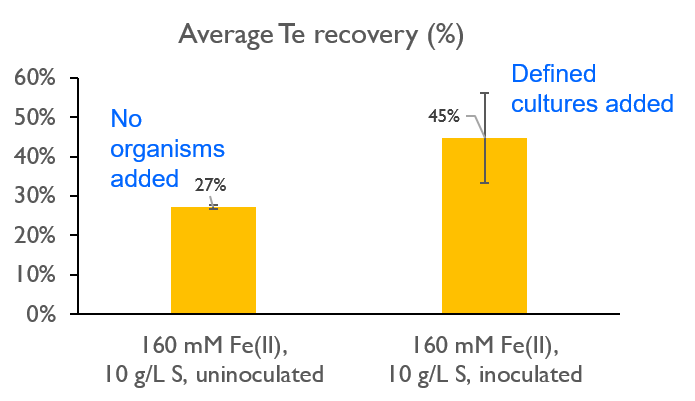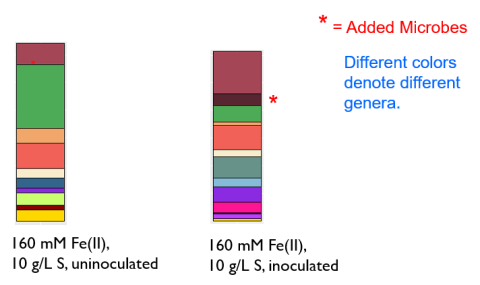
CMI researchers from Idaho National Laboratory and Rio Tinto conducted the research for this highlight.
Innovation
Microbial activity can induce tellurium extraction. Roughly half of Te in copper tailings is solubilized.
Achievement
Confirmed that addition of nutrients to tailings can stimulate microbial activity leading to tellurium solubilization, and indigenous organisms play a role.
- Significance and Impact
- Potential increase in domestic Te supply from mine tails.
- While adding known bioleaching cultures enhances recovery, the ability to rely on indigenous organisms increases the robustness of engineered bioleaching.
- The role of some of the organisms in Te solubilization remain to be elucidated.
Hub Targets Addressed
- Grand challenge: Unlocking unconventional resources.
- Industry adoptiaon of a technology for source diversification for a material other than REE or Li.

